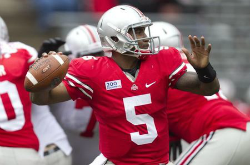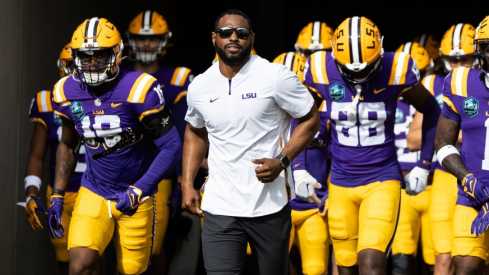 Giving quarterbacks options post-snap.
Giving quarterbacks options post-snap.I want to pick up upon something Chris Brown discussed in our interview, which is the concept of combining two plays together. This is currently one of the most innovative concepts in offensive football today, whereby offenses are giving their quarterback more options by combining concepts, such as a pass and run, into one play.
Brown has done a great job discussing this, but I willl break it down into smaller pieces and then discuss how Urban Meyer and Ohio State may utilize this concept this year.
Today I want to discuss the theory. The basic concept is the same as option football--rather than having to guess correctly pre-snap, the offense can ideally make the defense wrong every time. Playcalling is often a guessing game, whereby a coordinator is attempting to make an educated guess based upon in-week preparation, but it is only that--a guess. This task used to be easier, as defenses would be known as a cover 3 or cover 2 team. Teams still have tendencies, of course, but defenses tend to now be multi-faceted and put an emphasis on confusing offenses.
One technique offenses have long used has been to call several plays in the huddle and have a "check with me" call at the line of scrimmage, where the quarterback, after surveying the defense, would select what they believe is the appropriate play. But of course, the quarterback's pre-snap read may be incorrect as defenses often hide their intention pre-snap. And a team that wants to go no-huddle is often slowed down by such checks.
Increasingly then, teams are turning towards packaging concepts such as a quick pass and run play together on the same play. The idea, as noted, is to take the guessing game out of it and, by giving the quarterback options post-snap, allows the offense to react to what the defense is actually doing. The devil is in the details, of course, and like option football, this type of intricate reading that must be done in seconds takes repeated practice time. In addition, the two concepts must themselves fit together in terms of timing and progression, limiting the potential concepts available. I will focus on basic concepts that are used together in future posts.

